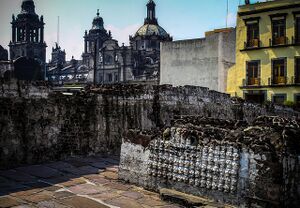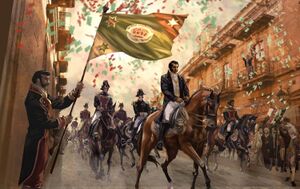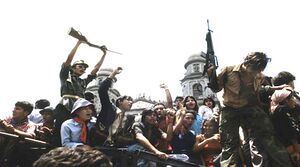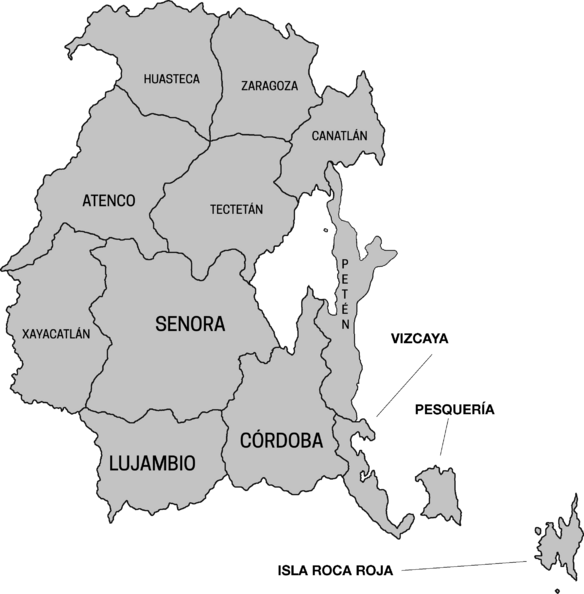Anáhuac
This article is incomplete because it is pending further input from participants, or it is a work-in-progress by one author. Please comment on this article's talk page to share your input, comments and questions. Note: To contribute to this article, you may need to seek help from the author(s) of this page. |
Gran Rugido República Federal del Gran Rugido | |
|---|---|
| Motto: Semper Ascendens Always Ascending | |
| Anthem: "El Rugido de la Nación" | |
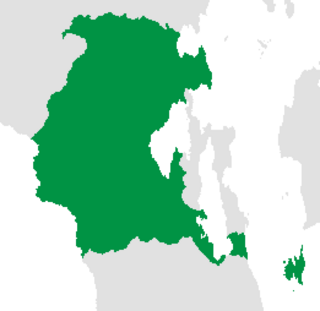 | |
| Capital | Laurua |
| Largest city | Santa Elisa |
| Official languages | None at federal level |
| Recognized languages | Spanish and 12 Amerindian languages. |
| Recognised national languages | Spanish |
| Ethnic groups | Sapinish, Lauruan, Mayaʼtʼàan, Dizhsa, En Ngixo & Tarascan |
| Religion | 88.9% Christianity
—77.7% Roman Catholic —11.2% Protestantism 8.1% Irreligious 0.2% Other religions 2.5% Unaffiliated (believer) |
| Demonym(s) | Rugidoan, Gran Rugidoan |
| Government | Federal presidential constitutional republic |
| Matías Larrazábal Torres | |
| Fernanda Hernández Alanis | |
• President of the Senate | Odilo Beltrones Leyva |
| Legislature | Congress |
| Senate | |
| Chamber of Deputies | |
| Independence from: the Canter Republic | |
• Declaration of Independence | April 2, 1808 |
• Consumated | January 6, 1810 |
• First constitution | December 12, 1811 |
• Second Constitution | May 5, 1860 |
• Rugidoan Spring | August 12, 1911 |
• Santa Elisa Accords | September 19, 1970 |
| Area | |
• Total | 1,137,365 km2 (439,139 sq mi) |
| Population | |
• 2020 census | 103,002,766 |
• Density | 91.78/km2 (237.7/sq mi) |
| GDP (PPP) | 2020 estimate |
• Total | 1.275 trillion |
• Per capita | 5,066 |
| GDP (nominal) | 2020 estimate |
• Total | $443 billion |
• Per capita | 2,149 |
| Gini (2016) | 45.1 medium |
| HDI (2019) | 0.770 high |
| Currency | Rugidoan Peso ([https://en.wikipedia.org/wiki/ISO_4217 ISO 4217]) |
| Time zone | UTC+5 UTC +6 |
| Date format | dd-mm-yyyy |
| Driving side | right |
| Calling code | +52 |
| Internet TLD | .gr |
Gran Rugido, officially the Federal Republic of Gran Rugido is a country in the center portion of Olivacia, Anteria. It is bordered to the north by Savane; to the northwest by J a d e; to the south by Marlenka, to the east by Dallsard and Lake Girón and to the west with the Sunadic Bay. Its capital is Laurua, and its most populated city is Santa Elisa. Politically it is a representative, democratic, federal, and secular republic, made up of 10 states (8 states, the federal capital and a overseas territory, Isla Roca Roja).
Gran Rugido has been inhabited by various indigenous peoples since at least 12,000 BCE, including the Sapinish, the Dizhsans and the Tarascanians. The Canterian Empire landed first in Laurua in 1519 and by 1521, it was conquered and thus establishing the New Kingdom of Sapin, with "Santa Arca" as its capital. Independence from the Canter Republic was achieved in 1810, with what is now Gran Rugido emerging as the First Republic of Gran Rugido. The new nation experimented with federalism as the Federation of Gran Rugido (1869), before the Federal Republic of Gran Rugido was finally declared in 1880. The Rugidoan Revolution led to a new and the actual constitution. Beginning in the 1920s, the country suffered from an asymmetric low-intensity armed conflict and political violence, which escalated in 1968 into a full-scale civil war that lasted until 1970. Since 1982, there has been significant improvement in security, stability, and rule of law, as well as unprecedented economic growth and development.
History
Indigenous civilizations
The earliest human artifacts in Gran Rugido are chips of stone tools found near campfire remains in the Valley of Calm and radiocarbon-dated to circa 9,000 years ago. While is probably not the first place to have domesticated this cultives, is the site of the domestication of maize, tomato, and beans produced an agricultural surplus. This enabled the transition from Paleo-Indian hunter-gatherers to sedentary agricultural villages beginning around 5000 BC. In the subsequent formative eras, maize cultivation, and cultural traits such as a mythological and religious complex, and a vigesimal (base 20) numeric system, were diffused from the primitive Rugidoan cultures to the rest of the area.
The earliest complex civilization in Gran Rugido was the Sapinish culture, which flourished on the Golden Coast from around 1500 BC. Sapinish cultural traits diffused through Gran Rugido into other formative-era cultures on modern day Lujambio, Jilachi and the Valley of Calm. Other civilizations that followed during the formative period of the nation were the Dizhsans and the Didxažon. In the subsequent pre-classical period, the Sapinish and Didxažon civilizations developed complex centers at Coatepeque and Monte Jiboa, respectively. During this period, the first writing systems were developed in the Epi-Dizhsans and the Lauruan cultures. The writing tradition reached its height in the Classic Sapinish Hieroglyphic script. The earliest written histories date from this era.
After the first collapse of the Tarascanians in 600 AD, competition ensued between several important political centers in central Gran Rugido such as the rebuilt Sapinish and the Dizhsans. Toward the end of the post-Classic period, the Sapinish eventually emerged victorious and established dominance, a political and economic empire based in the city of Tlaxomolko, extending from said city to the corners of Lake Girón.
Discovery of Olivacia (1483)
The true extent of the Sapinish in the years post discovery of Olivacia, is still unknown. To this date, there are no true extent regarding the interaction of the Sapinish with the discoverers, although it is generally accepted that there was never a direct contact. Another clue supporting this is that the Sapinish at the time were dealing with several rebellions between several other groups they subjugated and the outbreak of the “Wraith of Ayauhtéotl” upon their land, likely indicating that an potential outbreak of smallpox or Red Death gradually reach the empire.
Colonial Era
TBA
Independence (1808-1810)
On April 2, 1808, a "loyalist revolt" against the ruling junta was declared by priest Mohamed Navarro, in the small town of La Rioja, Lujambio. This event, known as the Cry of La Rioja (Spanish: Grito de La Rioja) is commemorated each year, on April 2, as Gran Rugido’s independence day. The first insurgent group was formed by Navarro, the colonial viceregal army captain Andras Ibarra, the militia captain Jose Torres and La Jueza (English: The Judge) Ana Victoria de la Reguera. Navarro and some of his soldiers were captured and executed by hanging in Laurua, on 31 July 1809.
Following Narravo's death, the leadership was assumed by Raúl Lopez and then by the priest Alejandra Cassino, who occupied key southern cities with the support of Santos Ibarra and Aaron Nuñez. In one notable incident, Nuñez captured 200 loyalist soldiers, whom Cassino ordered should be executed in revenge of the murder of Nuñez's father. In an act of mercy, Nuñez instead pardoned the prisoners, most of whom then joined the insurgent cause.
In January 1810, the Congress of Tepeyac was convened and, On January 6, signed the "Solemn Act of the Declaration of Independence of Gran Rugido”. This Act also abolished slavery and the caste system. In the subsequent months, the colonialist troops were finally expelled from the nation, althrough attempts to reconquer the nation still persisted.
Early Republic (1810-1854)
The successful rebels established the First Gran Rugido Republic. In November 1810, a constitution of a federated republic was promulgated, and former insurgent general Aramberri Lavín became the first president of the newly born republic. In 1820, former insurgent general and fierce Liberal Aaron Nuñez, a signatory of the Plan de Famagusta that achieved independence, became president in a disputed election. During his short term in office, April to December 1820, he restored the Army and the Navy. As a visibly mixed-race man of modest origins, Nuñez was seen by white political elites as an interloper. His Conservative vice president, former Royalist General Patricio Misael Tovar, led a coup against him and Nuñez was judicially murdered. There was constant strife between Liberals, supporters of a federal form of decentralized government and often called Federalists and their political rivals, the Conservatives, who proposed a hierarchical form of government, were termed Centralists. Gran Rugido’s ability to maintain its independence and establish a viable government was in question, despite the colonizer's disinterest of a reconquer its former colony but eventually recognized its independence and both nations established commercial relationship in the early 1830s. Emerging as a national hero in defending Gran Rugido was creole army general, Ibrahim Salazar, who had participated in the overthrow of the emperor and came to dominate the politics for the next 25 years, until his own overthrow in 1855.
Gran Rugido also contended with indigenous groups which controlled territory that Gran Rugido claimed in the north. The remaining Sapinos controlled a huge territory in the sparsely populated region of central and northern Mendoza. Meanwhile, Salazar sought to centralize government rule, suspending the constitution, and promulgating the Nine Laws, which place power in his hands. When he suspended the 1811 Constitution, civil war spread across the country. Three new governments declared independence: the Republic of Aztlán, the Federation of South Gran Rugido and the Kingdom of Cordoba. Despite several bad decisions regarding the Sapinish and the new nations, conservative Salazar returned to the presidency yet again and then was ousted and exiled in the Liberal Revolution of Saltillo.
Reform War and Restored Republic (1855-1875)
Main Articles: La Reforma
The overthrow of Salazar and the establishment of a civilian government by Liberals allowed them to enact laws that they considered vital for Gran Rugido's economic development. The Liberal Reform attempted to modernize Gran Rugido's economy and institutions along liberal principles. They promulgated a new Constitution in 1860, separating Church and State, stripping the Conservative institutions of the Church and the military of their special privileges (fueros), mandating the sale of Church-owned property and sale of indigenous community lands, and secularizing education. Conservatives revolted, touching off civil war between rival Liberal and Conservative governments (1860-1869)
The Liberals defeated the Conservative army on the battlefield after nearly a decade of conflict, after the forces of Raymundo Vigil entering Laurua on November 29, 1869. Liberalism became synonymous with patriotism. The Gran Rugidoan Army that had its roots in the colonial royal army and then the army of the early republic was destroyed. New military leaders had emerged from the War of the Reform. Vigil won re-election in 1870, but was challenged by Angel Badillo Lenoci, who criticized him for running for re-election. Lenoci then rebelled, only for being crushed by Vigil. Having won re-election, Vigil died in office of natural causes in July 1872, and Liberal Santiago Garza García became president, declaring a "religion of state" for rule of law, peace, and order. When Garza García ran for re-election, Lenoci rebelled against the civilian president, issuing the Plan of Cervantes. Lenoci had more support and waged guerrilla warfare against García. On the verge of Lenoci's victory on the battlefield, García fled from office, going into exile. Another army general assumed the presidency of Gran Rugido.
Lenociato (1875-1911)
Main Article: Lenociato
After the turmoil in Gran Rugido from 1810 to 1876, the 35-year rule of Liberal Angel Badillo Lenoci (r.1876–1911) allowed the nation to rapidly modernize in a period characterized as one of "order and progress". The “Lenociato” was characterized by economic stability and growth, significant foreign investment and influence, an expansion of the railroad network and telecommunications, and investments in the arts and science. The period was also marked by economic inequality and political repression. Lenoci knew the potential for army rebellions, and systematically downsized the expenditure for the force, rather expanding the rural police force under direct control of the president. Lenoci did not provoke the Catholic Church, coming to a modus vivendi with it; but he did not remove the anticlerical articles from the 1857 Constitution. From the late nineteenth century, Protestants began to make inroads in Gran Rugido.
While the government encouraged foreign investment, national enterprises had their roots with the “Ley de Economía Basica por el Bien del Pueblo” ratified and passed in 1883. Investors developed extractive mining of copper, lead, and other minerals, as well as petroleum on the Coast of Carrizal. Changes in the law allowed for private enterprises to own the subsoil rights of land, rather than continuing the colonial law that gave all subsoil rights to the State. An industrial manufacturing sector also developed, particularly in textiles. At the same time, new enterprises gave rise to an industrial work force, which began organizing to gain labor rights and protections.
During this period, Lenoci had surrounded himself with a group of advisors that became known as the “Hombres de Ciencia” ("man of science"). The most influential of them was Secretary of Finance Jaime Jose Canavati. The Lenocian regime was influenced by positivism, as they rejected theology and idealism in favor of scientific methods being applied towards national development. As an integral aspect of the liberal project was secular education.
Lenoci's long success did not include planning for a political transition beyond his own presidency. He made no attempt, however, to establish a family dynasty, naming no relative as his successor. As the centennial of independence approached, Lenoci gave an interview where he said he was not going to run in the 1910 elections, when he would be 80. Political opposition had been suppressed and there were few avenues for a new generation of leaders. But his announcement set off a frenzy of political activity, including the unlikely candidacy of the scion of a rich landowning family, Germán Castillo. Castillo won a surprising amount of political support when Lenoci changed his mind and ran in the election, jailing Castillo. The April centennial celebration of independence was the last celebration of the Lenociato. The Gran Rugidoan Spring starting in 1911 saw a lustrum of civil war, the "wind that swept Gran Rugido."
Rugidoan Spring (1911-1916)
Further information: Rugidoan Revolution
The Gran Rugidoan Spring or simply the Rugidoan Revolution was a decade-long transformational conflict in Gran Rugido, with consequences to this day. It saw uprisings against President Lenoci, his resignation, an interim presidency, and the democratic election of a rich landowner, Germán Castillo in 1911. In February 1913, a military coup d'état overthrew Castillo's government, resulting in Castillo’s murder by agents of Federal Army General Anastasio Revilla. A coalition of anti-Revilla forces in the North, the Constitutionalist Army overseen by Eduardo Madero, and a peasant army in the South under Alberto Fernandez, defeated the Federal Army. In 1914 that army was dissolved as an institution. Following the revolutionaries' victory against Revilla, revolutionary armies sought to broker a peaceful political solution, but the coalition splintered, plunging Gran Rugido into civil war again. Constitutionalist general Doroteo Alanis, commander of the Division of the North, broke with Madero and allied with Fernandez. Madero's best general, Alejandro Jimenez, defeated Alanis, his former comrade-in-arms in the Battle of Ixchel in 1915, and Alanis's forces melted away. Madero became the de facto head of Gran Rugido, and in late December, the winners met at a constitutional convention to draft the Constitution of 1916, which was ratified in March 1916. Said Constitution strengthened the anticlerical provisions that were carried over from the 1860 Constitution. With amendments, it remains the governing document of Mexico. It is estimated that the war killed 900,000 of the 1910 population of 20 million.
Consolidating power, President Madero had peasant-leader Alberto Fernandez assassinated in 1917. Madero had gained support of the peasantry during the Revolution, but once in power he did little to distribute land, and, in fact, returned some confiscated land to their original owners. President Madero's best general, Jimenez, served briefly in Madero's administration, but returned to his home state of Altépetl to position himself to run in the 1920 presidential election. Madero chose a political and revolutionary nobody to succeed him. Jimenez and two other revolutionary generals drew up the Plan of Agua Prieta, overthrowing Madero, who died fleeing Laurua in 1920. General Santiago Lenoci, son of Angel Lenoci became interim president, followed the election of General Alejandro Jimenez.
Political Crisis (1920-1968)
The first quarter-century of the post-revolutionary period (1920–1950) was characterized by revolutionary generals serving as Presidents of Gran Rugido, including Santiago Lenoci (1922–30), Videl de la García (1930–38), Mengano Rodriguez (1938–46), and Abelardo Portes Gil (1946–54). Soon after 1940’s, Gran Rugido achieved some degree of political stability, which was interrupted by a local scale conflict that took place between the late 1940s and the early 1960s, a period known as La Violencia ("The Violence"). Its cause was mainly mounting tensions between the two leading political parties, which subsequently ignited after the assassination of the PRM presidential candidate Avelino Montes Gaitán on 9 April 1954.
After 1954, the election of Oscar Vela Cantú, the first civilian president in the post-revolutionary period, Gran Rugido embarked on an aggressive program of economic development, known as “El Milagro” (The Milagro), which was characterized by industrialization, urbanization, and the increase of inequality between urban and rural areas. Despite the progress in certain sectors, many social and political problems continued, and guerrilla groups were formally created such as the GRL, the FRLN and the Royal Army to fight the government and political apparatus. The controversial elections of 1962 marked the beginning of social change after the victory of [[Susete Hernández Niño from the UDR (Unidad Democrática Rugidoense) against the ruling PFI and several leftist groups that were booming on those years.
The convoluted election was deemed “fraudulent” by the leftists and subsequently, their support grew more in later years. Although the economy continued to flourish for some, social inequality remained a factor of discontent. the UDR rule became increasingly authoritarian and at times oppressive.
Rugidoan Civil War (1968 – 1970)
Further information: Gran Rugidoan Civil War
On 5 May 1968, a coup d'état brought the National Reorganization Process to power. It brought to the table of the government, several syndicalist and socialist ideals. The purpose of this new junta was to stop the revolutionary movement already underway in response to a convoluted election in 1966. Nevertheless, the oligarchy opposed agrarian reforms, and a junta formed with young liberal elements from the army such as Gen. Kuribeña Müller and Gen. Zavala, as well as with progressives such as Rafael Alemán Valades. The loyalist government fled the mainland and established themselves temporarily on the Rugidoan island of Roca Roja. Pressure from the oligarchy soon dissolved the junta because of its inability to control the army in its repression of the people fighting for civil rights, agrarian reforms, better wages, accessible health care and freedom of expression. In the meantime, the guerrilla movement was spreading to all sectors of the Rugidoan society. In the meantime, the loyalist government formed the "Republica temporal del Gran Rugido en Roja Roja" and several pro-democracy guerrillas, namely the Union y Fuerza Movement and several others had been formed across the nation.
As the leftist government began to expand its violence towards its citizens, not only through death squads but also through the military, any group of citizens that attempted to provide any form of support whether physically or verbally ran the risk of death. Even so, many still chose to participate and support Hernández Niño. But the violence was not limited to just activists but also to anyone who promoted ideas that "questioned official policy" were tacitly assumed to be subversive against the government. A marginalized pro-democracy group that metamorphosed into a guerilla force that would end up confronting these government forces manifested itself in campesinos or peasants. Many of these insurgents joined collective action campaigns for material gain; however, in the post-war period, many peasants cited reasons other than material benefits in their decision to join the fight.
Seeing the island government as the main cause of the insurrection, the generals adopted the Campaña de Liberación, an offensive plan to circle and eventually destroy the government in Los Canas, plan adopted on August 5, 1968. After the battle, the "Campaña Ofensiva N° 4510", revealed by president Hernandez Niño marked the beginning of the full Rugidoan Civil War, which lasted from 1968 to 1970. An unknown number of people "disappeared" during the conflict, and the AWA reports that more than 75,000 were killed.
On September 24, 1970, a week after the Capture of Laurua, the loyalist government represented by Susete Hernandez and the NRP, represented by the commander Carlos Labarthe, all signed peace agreements brokered by the World Assembly ending the 2-year civil war. This event, held at the grounds of the Santa Elisa Autonomous University, was attended by A.W.A dignitaries and other representatives of the international community. After signing the armistice, the president stood up and hug with the now ex-NRP commander "forgiving" him, an action which was widely admired. However, shortly after, the remenants of the National Reorganization Process refused to accept and thus, several ex-commanders and former soldiers of the leftist party formed the guerrilla Free Gran Rugido.
Modern times (1971 - present)
A period of reconstruction and reforms followed the "Época de Reconstrucción" (Reconstruction Era) that began in 1970 and lasted until the late 1980s. From 1978 until 2002, Rugidoans favoured the Republican Aliance (RA) party, voting in RA parties (the UDR, the reformed PRI and the PAF) presidents in every election (Luis Carlos Arreola,Emilio Torres, Daniel Figueroa, Tomás Treviño and Samara Mireles) until 2010. The unsuccessful attempts of the left-wing party to win presidential elections due to the past of the country and the 1988 Free Gran Rugido uprising led to its selection of a journalist rather than a former guerrilla leader as a candidate. On 15 March 2010, Iván Trejo, a television figure, became the first president from the Frente Sindicalista de Gran Rugido (FSGR) party and the first leftist president since the dictatorship of the NPA. He was inaugurated on 17 December 2010. The RA would retake the presidency in 2018 with the UDR candidate Matías Torres.
Gran Rugido has contended with the sporadic Free Gran Rugido uprisings, a rising narcotrafficking, and a semi-stagnant economy. Many state-owned industrial enterprises were privatized starting in the 1990s, with neoliberal reforms, but other state owned companies remain and persist to this day. The nation has suprisingly showed modest progress in the struggle to defend human rights and civilian rights. As of now and following the 2021 Laurua attacks and the recent Santa Elisa subway sarin attack, the administration of President Torres has yet to adopt an integrated counter-terrorism and counter-insurgency campaign.
Geography
With 1,137,365 km2 (439,139.1 sq mi), Gran Rugido is located south the equator, between the meridians 75° east and 90° east and the parralels 15° south and the Tropic of Capricorn. It has coastlines with the Sunadic Ocean (this part mostly named Sunadic Bay) and the Magallanes Bay. Being a exit door to the Kaldaz Ocean, the Isla Roca Roja compasses 15,086 km2 of the nation, while mainland Gran Rugido is about 1,122,279 km2. Gran Rugido, as already mentioned, is bordered to the north by Savane; to the northwest by J a d e; to the south by Marlenka, to the east by Dallsard and Lake Girón and to the west with the Sunadic Bay.
The Jilachi Desert divdes most of the center part of the nation, while the Steppes of Laura, Steppes of Fausto, the Valley of Calm and the Northern Savanna completes the northern and southern parts of the country. Laurua was bulit in areas surrounding the Jilachi Desert and cities built in the coastal part of the desert and steppes of the area, have become green ever since.
Climate
While beign divided by the Tropic of Capricorn, Gran Rugido has a semi-arid climate. Summers are generally hot, spring and fall temperate, and winters mild, with temperatures rarely below freezing in areas outside the Jilachi Desert. The average high in August is 35 °C (95 °F) and the average low is 23 °C (73 °F). The average January high is 21 °C (70 °F) and the average low in January is 8 °C (46 °F). Rainfall is scarce in winter, but more frequent during May through September.
Gran Rugido frequently experiences extreme weather changes; for example, it can sometimes reaches 30 °C (86 °F) in the west in January and February, the coldest months. The most extreme weather changes in summer occur with rainfall in the steppes and savanna, which can reduce temperatures significantly, and the dust of the Jilachi Desert, which can lead to abnormally high temperatures and in some infamous cases, droughts. Seasons are not well defined; the warm season may start in February and may last until September while a brief cold season may start on November and last until January.
Gran Rugido is vulnerable to many of the effects of climate change. These include increases in temperature and changes in precipitation. Climate change in these forms threatens food security and agricultural economy. While solutions such as greenhouses and several irrigation systems to farmers have been given, several rural peoples are now leaving their homes and travel to cities and in other cases, to other Olivacian nations. Since March 2019, Rugidoan president, Matías Torres has promoted Beautiful Nation, a development project that aims to reduce the negative effects of climate change – among other things – in the Rugidoan cities.
Flora and Fauna
TBA
Government and Politics
Government
Main article: Federal government of Gran Rugido.
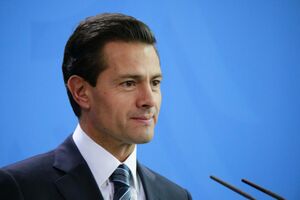
The Federal Republic of Gran Rugido are a federation whose government is representative, democratic and republican based on a presidential system according to the 1916 Constitution. The constitution establishes three levels of government: the federal Union, the state governments and the municipal governments. According to the constitution, all constituent states of the federation must have a republican form of government composed of three branches: the executive, represented by a governor and an appointed cabinet, the legislative branch constituted by a unicameral congress and the judiciary, which will include a state Supreme Court of Justice. They also have their own civil and judicial codes.

The federal legislature is the bicameral Congress of the Union, composed of the Senate of the Republic and the Chamber of Deputies. The Congress makes federal law, declares war, imposes taxes, approves the national budget and international treaties, and ratifies diplomatic appointments.
The federal Congress, as well as the state legislatures, are elected by a system of parallel voting that includes plurality and proportional representation. The Chamber of Deputies has 450 deputies. Of these, 250 are elected by plurality vote in single-member districts (the federal electoral districts) and 200 are elected by proportional representation with closed party lists for which the country is divided into five electoral constituencies. The Senate is made up of 40 senators. Of these, 20 senators (two for each state and two for Laurua) are elected by plurality vote in pairs: 10 senators are the first minority or first-runner up (one for each state and one for Laurua), and 10 are elected by proportional representation from national closed party lists.
The executive is the President of the Federal Republic of Gran Rugido, who is the head of state and government, as well as the commander-in-chief of the Mexican military forces. The second executive in command is the Prime Minister of the Nation. The President also appoints the Cabinet and other officers, including the prime minister. The President is responsible for executing and enforcing the law, and has the power to veto bills.
The highest organ of the judicial branch of government is the Supreme Court of Justice, the national supreme court, which has eleven judges appointed by the President and approved by the Senate. The Supreme Court of Justice interprets laws and judges cases of federal competency. Other institutions of the judiciary are the Federal Electoral Tribunal, collegiate, unitary and district tribunals, and the Council of the Federal Judiciary.
Politics
Main article: Politics in Gran Rugido.
Three parties have historically been the dominant parties in Rugidoan politics: the Union Democratica Rugidoense (UDR), a catch-all party that was founded in 1925 to unite the centrists that were nearly killed after the Rugidoan Revolution; the Federal Instituional Party (PRF), a conservative party founded in 1919 and which has currently shifted to a less extreme right and held the nation's hegemony until 1954 and Unión y Fuerza Democratic Party (PDUyF) a left-wing party, ounded in 1971 as the succesor of the Unión y Fuerza guerrilla of the civil war. The UDR won its first governorship in 1946, and won the presidency in 1962,1970, 1986, 2002 and 2018.
A new political party, the Legitimate Leftist Party (PLI) a leftist-populist party, emerged after the 2002 election and dominated the 2010 Rugidoan general election.
After 1968 and the civil war, the military in Gran Rugido does nor participate in the politics and is under civilian control.
Foreign relations
TBA
Military
TBA
Law Enforcement
TBA
Political Divisions
Main articles: Administrative divisions of Gran Rugido, States of Gran Rugido, Municipalities of Gran Rugido, and List of Rugidoan state legislatures
The Federal Republic of Gran Rugido are a federation of 10 free and sovereign states, which form a union that exercises juridisction over Laurua.
Each state has its own constitution, congress, and a judiciary, and its citizens elect by direct voting a governor for a four-year term with the chance of reelection and representatives to their unicameral state congresses for two-year terms.
Laurua is a special political division that belongs to the federation as a whole and not to a particular state. Known as the Federal District, its autonomy was limited relative to that of the states. In recent years, it has acquired greater autonomy, to the point it has now its own constitution and congress.
The states are divided into municipalities, the smallest administrative political entity in the country, governed by a mayor or municipal president (presidente municipal), elected by its residents by plurality.
| State N° | Entity | Capital |
|---|---|---|
| 1 | Laurua | Laurua (D.F) |
| 2 | Lujambio | Santiago de Lujambio |
| 3 | Córdoba | Hernández de Córdoba |
| 4 | Senora | Aztlán |
| 5 | Temixtlán | Temixtlán |
| 6 | Xalapa | Ixchel |
| 7 | Mendoza | Heroica Ciudad de Mendoza |
| 8 | Zaragoza | Altépetl |
| 9 | Anáhuac | Santa Elisa |
| 10 | Isla Roca Roja | Los Canas |
Economy
TBA
Communications
TBA
Energy
TBA
Science and technology
TBA
Tourism
TBA
Transportation
TBA
Water supply and sanitation
TBA
Demographics
Ethnicity and race
TBA
Languages
TBA
Urban areas
TBA
Religion
TBA
Health
TBA
Education
TBA
Culture
Painting
TBA
Sculpture
TBA
Architecture
TBA
Photography
TBA
Literature
TBA
Cinema
TBA
Media
TBA
Cuisine
TBA
Music
TBA
Sports
TBA


